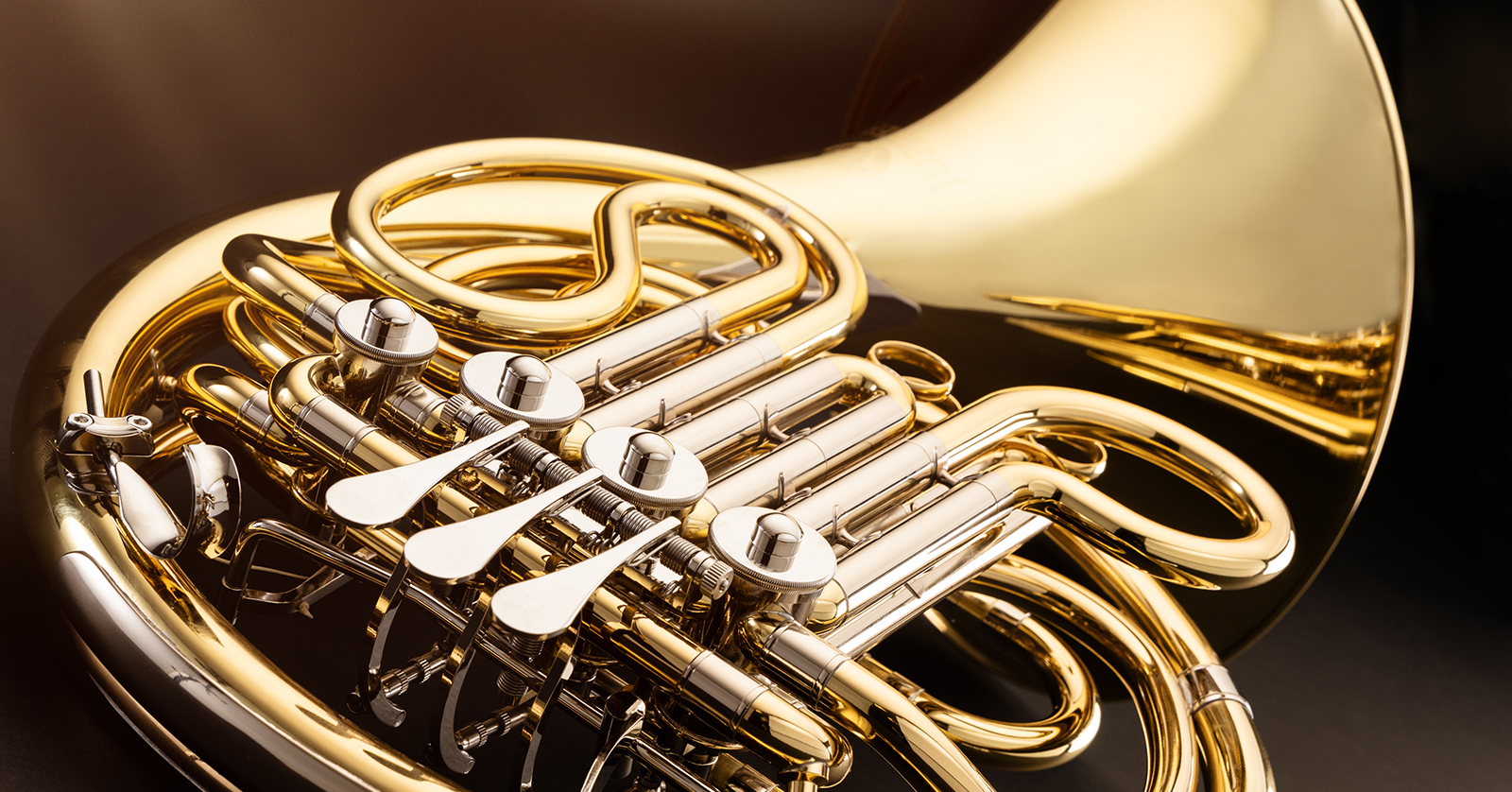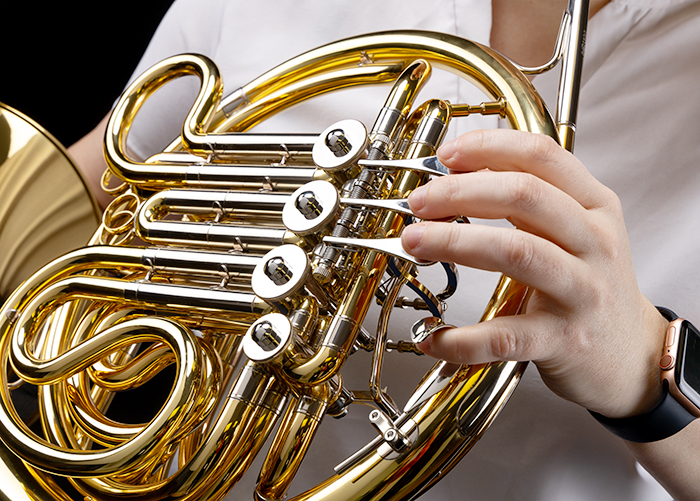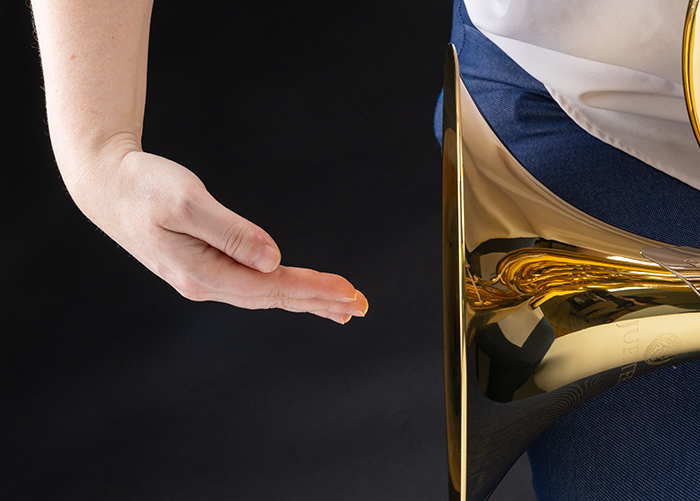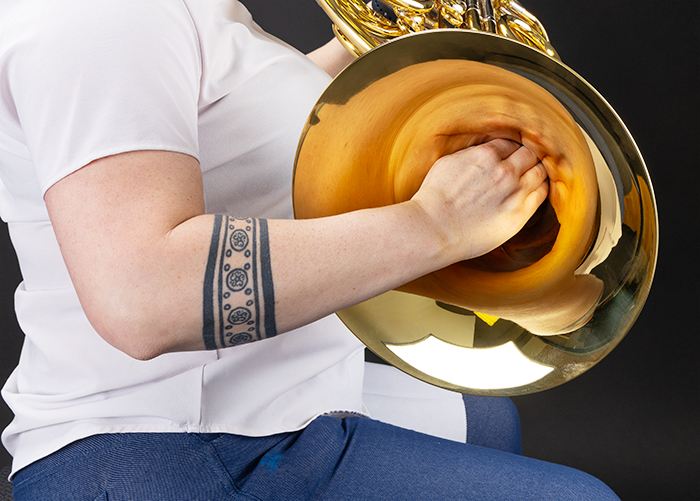French Horn Quickstart Guide

The French horn can be a very fun instrument to play, but you first need to learn the fundamentals. In this guide, we will show you the parts of a French horn, teach you how to hold it correctly, and provide some tips and tricks along the way! Follow the sections below to get started.
Parts of a French Horn
There are different types of French horns, but they all can be broken down into four things: mouthpiece, key levers, rotor valves, and tuning slides.
Mouthpiece
The French horn mouthpiece is the critical piece of your French horn. All mouthpieces serve the same purpose, but their materials, dimensions, and quality play a significant role in a French horn’s tone.
Not all French horn players play the same or want to achieve the same tone, so what mouthpiece works for one person may not work for another.
Here are a few tips for using a French horn mouthpiece.
- Don’t smack the mouthpiece when inserting it into your French horn! This can cause the mouthpiece to get stuck. If this happens, take it to your music teacher or a local music shop to have it removed.
- Using mouthpiece cleaner or dish soap in warm water, wipe the mouthpiece down with a microfiber cloth after playing. This will both clean and sanitize the mouthpiece!
- Use a brass mouthpiece brush with warm, soapy water every week. This helps clear any buildup or deposits that can affect the airflow.
Valve Keys and Rotary Valves
Valve keys and rotary valves are connected using a mechanism or by string. When you press a key lever, the mechanism or string assists in spinning a cylinder in the rotary valve, which diverts the airflow, thus changing its pitch.
Tuning Slides
NOTE: We will be covering double French horns in this guide. Read more below to learn the differences between single- and double horns.
One distinguishing feature of the French horn is its number of slides and piping. This may initially be a little overwhelming (and confusing), especially if you’re a beginner. Here are a few tips for your tuning slides.
- Grease the tuning slides biweekly.
- Follow your leadpipe to the first slide. This is the tuning slide for the Bb side of your French horn. The slide directly underneath it is for the F side.
- Use the slides associated with the specific valve key for fine-tuning.
- While tuning apps are available, we highly recommend investing in a quality tuner, like the Korg CA-50, for the most accurate readings possible.
- Temperature will affect tuning! Cold temperatures will play flat, and warmer temps play sharp. Fatigue is also a factor when tuning, so adjust tuning as necessary!
What’s the difference between a single horn and double French horn?
While there are three types of French horns, the most common for beginners or students will often be either a single horn or a double horn.
Single horns play in one key: F or Bb. They will have three valve keys and are the preferred horn for beginners. Bb single horns do exist, but they are very uncommon. F single horns have a lower tuning threshold, meaning they are best for low- to medium-range play.
Double horns combine both F and Bb into one instrument. This is done by the horn having two valve slides per valve instead of one. The thumb valve key can change the horn’s key between F and Bb. This gives you a wider pitch range.
How to Hold a French Horn
Holding a French horn is easy. However, you must ensure your right hand is in the correct position.
- Wrap your left hand around the top of the horn, then rest your first three fingertips on the valve keys. Lightly wrap your pinky around the finger hook. Keeping your fingers slightly curved will ensure you can press the valve keys quickly.
- Slightly cup your right hand. Turn it 90 degrees so your knuckles are facing away from you.
- Place your right hand inside the bell and have your knuckles touch the bell. Don’t let your palm rest in the bell, as that will block the airflow!
- Sit up straight and bring the horn’s mouthpiece up to your lips. Don’t slouch when playing, as that will constrict airflow, making it more challenging to let air out!

Wrap your left hand around the horn, putting your pink in the finger ring.

Cup your right hand.

Insert your right hand into the French Horn bell.
Related Articles
When you need help, Sweetwater has the answers!
Our knowledge base contains over 28,000 expertly written tech articles that will give you answers and help you get the most out of your gear. Our pro musicians and gear experts update content daily to keep you informed and on your way. Best of all, it’s totally FREE, and it’s just another reason that you get more at Sweetwater.com.


